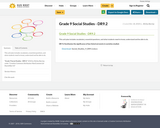
This unit plan includes vocabulary, essential questions, and what students need to know, understand and be able to do.
- Subject:
- Social Studies
- Material Type:
- Lesson
- Unit of Study
- Date Added:
- 10/18/2018

This unit plan includes vocabulary, essential questions, and what students need to know, understand and be able to do.
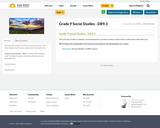
This unit plan includes vocabulary, essential questions, and what students need to know, understand and be able to do.
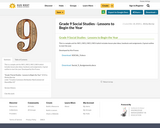
This is a sample unit for IN9.1, IN9.2, IN9.3, IN9.4 which includes lesson plan ideas, handouts and assignments. A great outline to start the year.
Developed by Kim Froese.
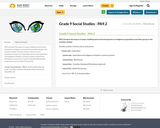
PA9.2 Analyze the impact of empire-building and territorial expansion on indigenous populations and other groups in the societies studied.
This file contains 5 lessons and an assessment:
Lesson one: Imperialism
Lesson two: Imperialism and Indigenous Peoples in ancient societies
Lesson three: Worldviews
Lesson four: Canadian Aboriginal Worldviews (optional)
Lesson five: World Perspective
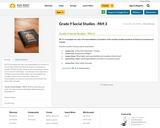
PA. 9.3 Investigate the roles and responsibilities of members of the societies studied and those of citizens in contemporary Canada.
This file contains 5 lessons and an assessment:
Lesson one: Criteria for citizenship – Canada
Lesson two: Oppression of Rights
Lesson three: What rights and responsibilities do Canadian citizens have?
Lesson Four: Rights and Responsibilities of citizens in an ancient society
Lesson Five: Roles within Societies
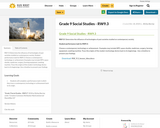
RW 9.3 Determine the influence of technologies of past societies studied on contemporary society.
Student performance task for RW9.3:
Choose a contemporary technology or achievement. Examples may include MP3, space shuttle, medicines, surgery, farming equipment, washing machine. Trace the origins of the modern technology device back to its beginnings. Use a timeline to present your findings.

Ted Talk: On March 15th, 44 BCE, Roman dictator Julius Caesar was assassinated by a group of about 60 of his own senators. Why did these self-titled Liberators want him dead? And why did Brutus, whose own life had been saved by Caesar, join in the plot? Kathryn Tempest investigates the personal and political assassination of Julius Caesar.
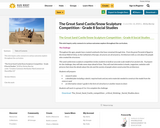
This mini inquiry unity connects to various outcomes explore throughout the curriculum.

Today we’re exploring another branch of conflict theory: gender conflict theory, with a look at sociology’s forgotten founder, Harriet Martineau. We’ll also discuss the three waves of feminism, as well as intersectionality.

Our final unit of Crash Course Sociology is medical sociology. Today we’ll explain what it is and get an overview of the role of society in our notions of health and disease.

This lesson plan helps students explore the concept that health is a basic human right. Primary sources -- Article 25 of the "U.N. Universal Declaration of Human Rights" and Article 1 of the "Declaration of Alma-Ata" -- are used to help students define health and human rights, and to build a connection between the two. Students apply the concept of health as a basic human right by analyzing case studies from the Against the Odds exhibition
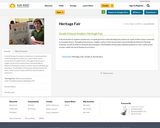
In Social Studies 8, students worked over a 6-week period to create Heritage Fair projects on a topic of their choice connected to Canadian history. Throughout the process, I taught a series of mini-lessons that covered the Big Six Historical Thinking Concepts, as well as research methods and techniques. The flexibility of the project allowed students to cover a wide variety of topics within the Social Studies 8 curriculum.
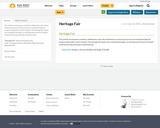
This artifact encompasses creativity, collaboration, and critical thinking as it
presents the process of creating heritage fair projects with grades 4 and 5 students.
The heritage fair project was completed through a co-teaching and focused on
student-centered learning and project-based learning.
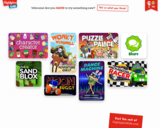
This website features all of the great things Highlights Kids has to offer: activities, jokes, games, opportunities to explore fascinating things, view podcast and playlists, and participate in "Hidden Pictures" adventures. Lots of fun for kids to explore!
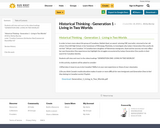
Students will view and react to the video/readings "GENERATION ONE: LIVING IN TWO WORLDS".
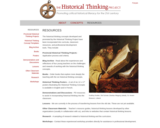
The historical thinking concepts developed and promoted by the Historical Thinking Project have been incorporated into curricula, classroom resources, and professional development tools. They include:
Provincial Historical Thinking Projects - Application process and criteria.
Blog Archive - Read about the experiences and reflections of four young teachers on the challenges and rewards of working with the historical thinking concepts.
Books - Order books that explore more deeply the teaching with the six historical thinking concepts.
Historical Thinking Posters – A set of six 12 x 17" posters illustrating the Historical Thinking Concepts is available in English and in French.
Demonstrations and Discussions - PD resources to assist in incorporating historical thinking into the classroom.
Lessons - We are currently in the process of transferring lessons from the old site. These are not yet available.
Other Classroom Materials - Teacher’s resource guides, historical thinking lessons developed by other organizations (usually in collaboration with us), and links to websites that contain historical thinking lessons.
Research - A sampling of research related to historical thinking and the curriculum.
Workshops - Contact these experienced workshop providers directly for assistance in professional development.
Use of Materials/Copyright
We encourage the use of resources, lessons, and information from our site, but we ask that you credit the Historical Thinking Project for the ideas and materials, by listing our name and our website URL (www.historicalthinking.ca). Fair use of resources does NOT include posting of HTP power points, videos, or other resources on other sites. Use a link to www.historicalthinking.ca instead.
We want historical thinking incorporated into curriculum, classrooms, and educational resources as widely as possible. When you reference the Historical Thinking Project (www.historicalthinking.ca) you are helping us to achieve this goal.
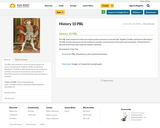
This PBL leads students to study and analyze people and events connected with "English Civil War and Glorious Revolution". The PBL includes disclosures for the students to consider and assessments (formative and summative). A PowerPoint of pictures of the historically important people is attached.
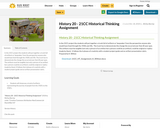
In the 21CC project the students will put together a trunk full of artifacts or ‘keepsakes’ from the perspective anyone who would have lived through the 1920s and 30s. The truck has to demonstrate the change the occurred over that 20 year span. The artifacts must be tangible (not only a picture of an artifact but a picture could be an artifact); could be original or replica (made by them). It follows the 6 phases of creativity with a student project guide and an artifact presentation rubric.
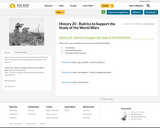
These rubrics were developed to aid in the study of the World Wars
Gas Warfare
Historical Newspaper
Description of the trenches

This package is the online accompaniment for our feature travelling education kit: History Box. In this package you’ll find digitized copies of each object found in the box, historical context, additional resources and activity suggestions. You do not need to borrow the kit to use this online resource.
This package contains objects and resources that are represented in the Canadian Museum of History’s signature exhibition, the Canadian History Hall. Collected from across the country, and highlighting varied perspectives, these objects illuminate the richness and diversity of the Canadian experience. They can be used as entry points to discussions on different periods in Canada’s history, or as lessons in historical inquiry that can build students’ critical thinking and historical inquiry skills.
To book a History Box, or for more information, please visit historymuseum.ca/learn/history-box.
The topics covered in this History Box include Early Canada, Colonial Canada, and Modern Canada.
There are two types of activities: Package Activities and Object Activities.
Package Activities are project-based activities designed to accommodate one or more classes. These activities involve the use of historical thinking concepts while exploring the whole package, resulting in a more comprehensive experience.
Object Activities are short inquiry-based activities that typically take 5–25 minutes. These activities encourage students to think critically about the objects being presented, and to use historical thinking concepts.
Both types of activities were created with the guidance of educators from across Canada, and incorporate current educational theory and approaches.
Is everything accessible?
We know that everyone accesses information differently, and have tried to ensure that package content addresses the varied needs of students and educators. Some of the many ways in which these packages support accessibility:
- Three levels of historical context to accommodate different ways of learning.
- A variety of media, including audio and video content, for diverse learning abilities.
- Multiple activity suggestions for diverse learning abilities.
- Content can be read with Assistive Technology applications.
- Downloadable and printable content that can be accessed offline.
- Transcripts for video, audio and hard-to read archival documents.
- Video subtitles in both official languages.
- Content is available in both official languages.
- Website complies with Website Content Accessibility 2.0 AA Guidelines.